
Love Affair is a 1939 American romance film, co-starring Charles Boyer and Irene Dunne, and featuring Maria Ouspenskaya. It was directed by Leo McCarey and written by Delmer Daves and Donald Ogden Stewart, based on a story by McCarey and Mildred Cram. Controversial on concept, the official screenplay was re-tooled and rewritten to appease Hollywood censorship and relied on actor input and improvisation, causing long delays and budget extensions.

David O. Selznick was an American film producer, screenwriter and film studio executive who produced Gone with the Wind (1939) and Rebecca (1940), both of which earned him an Academy Award for Best Picture. He also won the Irving Thalberg Award at the 12th Academy Awards, Hollywood's top honor for a producer, in recognition of his shepherding Gone with the Wind through a long and troubled production and into a record-breaking blockbuster.
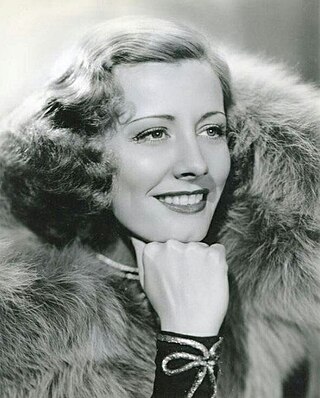
Irene Dunne was an American actress who appeared in films during the Golden Age of Hollywood. She is best known for her comedic roles, though she performed in films of other genres.

Gregory La Cava was an American film director of Italian descent best known for his films of the 1930s, including My Man Godfrey and Stage Door, which earned him nominations for Academy Award for Best Director.
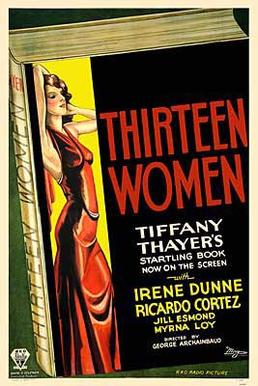
Thirteen Women is a 1932 American pre-Code psychological thriller film, produced by David O. Selznick and directed by George Archainbaud. It stars Myrna Loy, Irene Dunne and Ricardo Cortez. The film is based on the 1930 bestselling novel of the same name by Tiffany Thayer and was adapted for the screen by Bartlett Cormack and Samuel Ornitz.

Val Lewton was a Ukrainian-American novelist, film producer and screenwriter best known for a string of low-budget horror films he produced for RKO Pictures in the 1940s. His son, also named Val Lewton, was a painter and exhibition designer.
John Cromwell was an American film and stage director and actor. His films spanned the early days of sound to film noir in the early 1950s, by which time his directing career was almost terminated by the Hollywood blacklist.

What Price Hollywood? is a 1932 American pre-Code drama film directed by George Cukor and starring Constance Bennett with Lowell Sherman. The screenplay by Gene Fowler, Rowland Brown, Jane Murfin and Ben Markson is based on a story by Adela Rogers St. Johns and Louis Stevens. The supporting cast features Neil Hamilton, Gregory Ratoff, Brooks Benedict, Louise Beavers and Eddie "Rochester" Anderson.
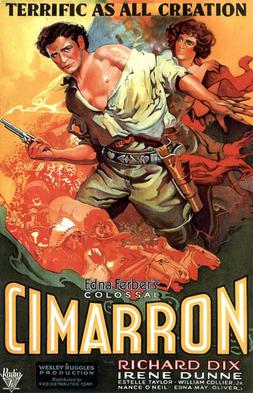
Cimarron is a 1931 pre-Code epic Western film starring Richard Dix and Irene Dunne, and directed by Wesley Ruggles. Released by RKO, it won Academy Awards for Best Picture, Best Adapted Screenplay, and Best Production Design.

Fannie Hurst was an American novelist and short-story writer whose works were highly popular during the post-World War I era. Her work combined sentimental, romantic themes with social issues of the day, such as women's rights and race relations. She was one of the most widely read female authors of the 20th century, and for a time in the 1920s she was one of the highest-paid American writers. Hurst also actively supported a number of social causes, including feminism, African American equality, and New Deal programs.

Jane Eyre is a 1943 American film adaptation of Charlotte Brontë's 1847 novel of the same name, released by 20th Century Fox. It was directed by Robert Stevenson and produced by the uncredited Kenneth Macgowan and Orson Welles; Welles also stars in the film as Edward Rochester, with Joan Fontaine playing the title character.

Pandro Samuel Berman, also known as Pan Berman, was an American film producer.

Gregory Ratoff was a Russian-American film director, actor and producer. As an actor, he was best known for his role as producer "Max Fabian" in All About Eve (1950).

Back Street is a 1961 American Eastmancolor drama film directed by David Miller, and produced by Ross Hunter. The screenplay was written by William Ludwig and Eleanore Griffin based on the 1931 novel of the same name by Fannie Hurst. The music score is by Frank Skinner, who also scored the 1941 version. The film stars Susan Hayward, John Gavin, and Vera Miles.
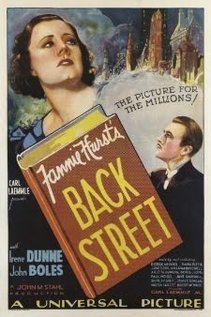
Back Street is a 1932 American pre-Code drama film directed by John M. Stahl and starring Irene Dunne and John Boles. Based on the best-selling of the same title by Fannie Hurst, it tells the story of a woman who spends her life as the secret mistress of a wealthy married man. The devotion and love of the woman to the married man determines that she will be the “back streets” of him in the whole life; a story of a love that was not destined. This was the first of three film versions of Hurst's novel; remakes were released in 1941 and 1961.

Roberta is a 1935 American musical film released by RKO Radio Pictures and directed by William A. Seiter. It stars Irene Dunne, Fred Astaire, Ginger Rogers, and features Randolph Scott, Helen Westley, Victor Varconi and Claire Dodd. The film was an adaptation of the 1933 Broadway musical Roberta, which in turn was based on the novel Gowns by Roberta by Alice Duer Miller. It was a solid hit, showing a net profit of more than three-quarters of a million dollars.
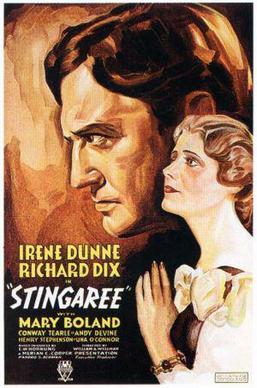
Stingaree is an American pre-Code romantic drama film directed by William A. Wellman released by RKO Radio Pictures in 1934. The film was based on a 1905 novel by Ernest William Hornung. Set in Australia, it stars Irene Dunne as Hilda Bouverie and Richard Dix as Stingaree. Hollywood had previously filmed the Hornung story as serials in 1915 and 1917, starring True Boardman.

Alan Marshal was an Australian-born actor who performed on stage in the United States and in Hollywood films. He was sometimes billed as Alan Marshall or Alan Willey.

The Younger Generation is a 1929 sound part-talkie American drama film directed by Frank Capra and starring Ricardo Cortez. In addition to sequences with audible dialogue or talking sequences, the film features a synchronized musical score and sound effects along with English intertitles. The soundtrack was recorded using the Western Electric sound-on-film system. The film was produced by Jack Cohn for Columbia Pictures. It was Capra's first sound film. The screenplay was adapted from a 1927 Fannie Hurst play, It Is to Laugh.

RKO Radio Pictures Inc., commonly known as RKO Pictures or simply RKO, was an American film production and distribution company, one of the "Big Five" film studios of Hollywood's Golden Age. The business was formed after the Keith-Albee-Orpheum theater chain and Joseph P. Kennedy's Film Booking Offices of America studio were brought together under the control of the Radio Corporation of America (RCA) in October 1928. RCA executive David Sarnoff engineered the merger to create a market for the company's sound-on-film technology, RCA Photophone, and in early 1929 production began under the RKO name. Two years later, another Kennedy concern, the Pathé studio, was folded into the operation. By the mid-1940s, RKO was controlled by investor Floyd Odlum.




















